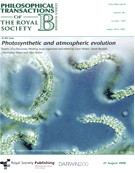Resum
The major cause of acquired immune deficiency syndrome (AIDS) is human immunodeficiency
virus type 1 (HIV-1). We have been using evolutionary comparisons to trace (i) the origin(s) of
HIV-1 and (ii) the origin(s) of AIDS. The closest relatives of HIV-1 are simian immunodeficiency
viruses (SIVs) infecting wild-living chimpanzees (Pan troglodytes troglodytes) and gorillas (Gorilla gorilla
gorilla) in west central Africa. Phylogenetic analyses have revealed the origins of HIV-1:
chimpanzees were the original hosts of this clade of viruses; four lineages of HIV-1 have arisen
by independent cross-species transmissions to humans and one or two of those transmissions
may have been via gorillas. However, SIVs are primarily monkey viruses: more than 40 species of
African monkeys are infected with their own, species-specific, SIV and in at least some host species,
the infection seems non-pathogenic. Chimpanzees acquired from monkeys two distinct forms of
SIVs that recombined to produce a virus with a unique genome structure. We have found that
SIV infection causes CD4þ T-cell depletion and increases mortality in wild chimpanzees, and so
the origin of AIDS is more ancient than the origin of HIV-1. Tracing the genetic changes that
occurred as monkey viruses adapted to infect first chimpanzees and then humans may provide
insights into the causes of the pathogenicity of these viruses. (Resumen extraído del artículo)






